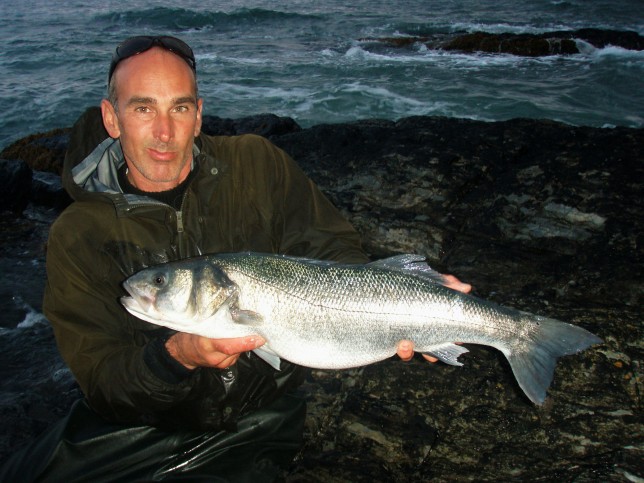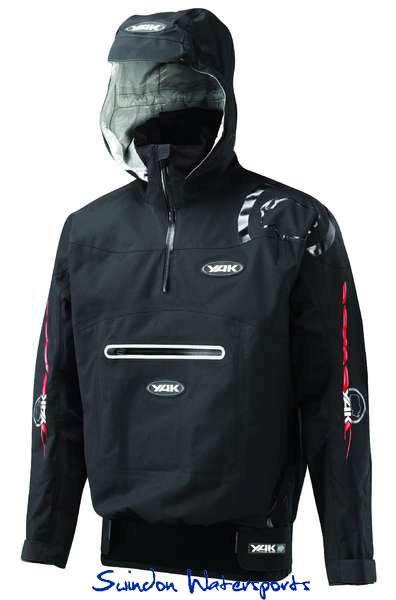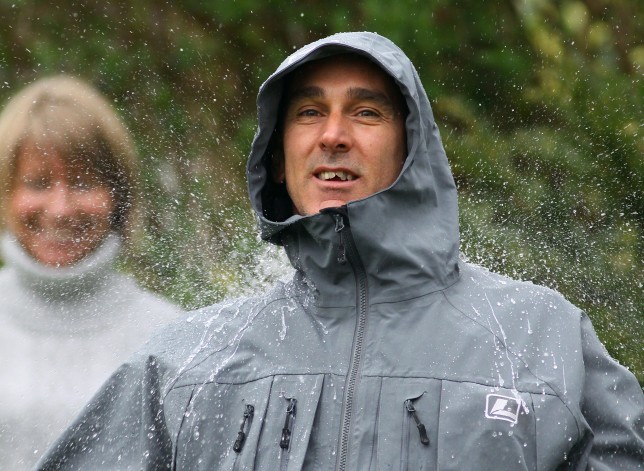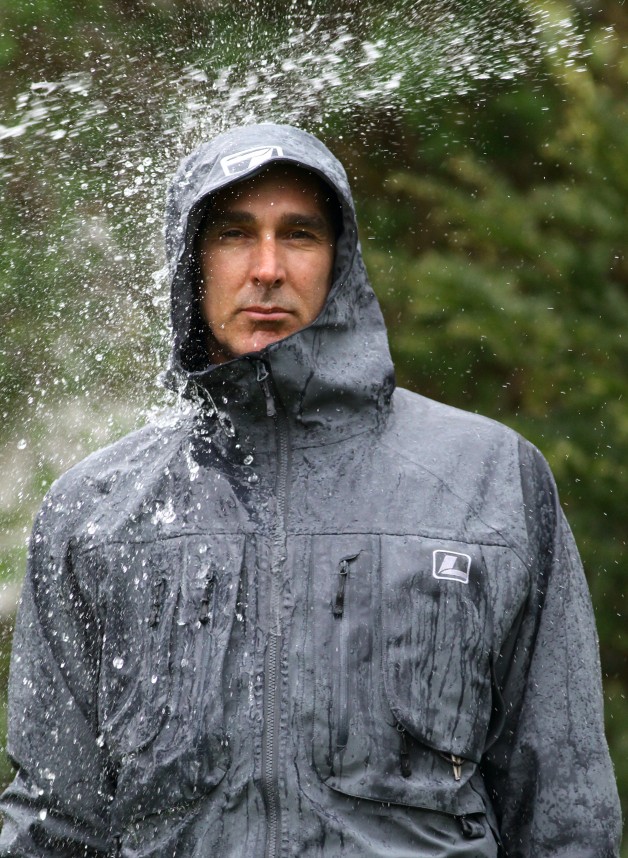It’s my experience that spending money in the hope it will bring more bass can sometimes actually work. Yet it’s not investments in better rods, reels and lures that have noticeably increased my returns compared to money spent on getting afloat, on travel, or on buying effective weatherproof clothing. The benefits bass fishing attire bring to my bass catching is perhaps less obvious compared to the first two, so let me explain….
Around the millennium I was fortunate enough fish for salmon in Alaska. The stories I heard before departing revolved around bears, mosquitoes and the weather, so in the hope of solving at least the one problem I bought a new but relatively cheap Scierra wading jacket. For the first few days in the wilderness 100 miles from the nearest town it rained non-stop. While this precipitation at least kept the mozzis at bay, as the hours of each day passed I became increasingly damp and cold as water seeped into my clothing. On these wet days I was repeatedly forced to quit early just so I could warm up. When the rain did eventually stop for the last few days, industrial strength DEET spray failed to keep the clouds of blood craved thirsty insects from devouring me, while only our guides pack of huskies prevented a delinquent grizzly from doing likewise… but that’s another story.
Lesson learnt in relation to poor jackets and the loss of dream fishing time you’d have thought, but sadly no. After trying to reproof it without success and continuing to get wet I bought another “bargain” jacket a few years later which again failed when set the ultimate test – a week in Ireland. Only then did I twig that with jackets, scrimping on money, cost me in terms of my effectiveness as an angler. So I bought a quality Orvis Tailwater jacket from the USA (where they were far cheaper, as obviously my tight fisted tendencies hadn’t completely deserted me). It was chosen as it seemed to possess desirable qualities it forerunners lacked. It was made from the same material as their breathable waders to waterproof and windproof and hard wearing. It also had neoprene cuffs with storm seals to prevent the damp getting in via other routes.
When I got it home I dressed up in my waders and new jacket, then ran up and down the garden while my children hosed me down and threw buckets of water at me. The only ingress was from hits to my face resulting in slightly damp around the collar. This clearly proved to me the jacket was up to the job (while also adding further to the neighbours suspicions that the man next door wasn’t quite all there.)
For the first 6 years of wearing it I barely noticed the garments presence. I fished from shore and afloat in my little zodiac. I waded up to chest in it, taking numerous waves over the head and fished in gale driven monsoons. It had had treble hooks rip up the inside of the pockets where I stashed plugs when deep wading, I fell off barbed wire fences and tore (and mended) it and slept in it on beaches and soft Irish grass. Through all this I remained snug and dry and the jacket remained functional.

It was only over the past couple of seasons when the sleeves began to lose their waterproof qualities that I realised the value of my extra skin. I reproofed the material with various products and mending any possible holes with aquasure, yet with each downpour or soaking in waves I got progressively wetter. When eventually the zip began to fail, I finally admitted the jacket had become a liability, not an asset.
My first thought was, given its track record I should replace it with the current equivalent jacket from Orvis. Yet pound to dollar exchange rates were less favourable than in the past and given years of health service pay freezes and inflation the cheapest UK price of just short of 200 quid was more than I could justify to myself or my family. So in order to make a smart decision on a replacement that was up to the job I listed what the qualities I wanted in a bass fishing jacket:
• The material needed to be completely waterproof, windproof and hard wearing, as well as being sufficiently breathable for trekking to far flung marks when zipped up tight in the rain.
• It needed a hood – one that was comfortable and provided a good seal against the elements.
• The cuffs needed provide a seal to prevent water creeping up my arm if my hands went under water or down my arm if I lifted my hand vertically such as when casting (especially on the rare occasions I fly fish).
• A means of tightening the base of the jacket was also potentially beneficial when deep wading in surf.
• Given I always wore it with waders a short jacket was lighter, stayed out of the surf more and was therefore advantageous
• A few big pockets and the odd D ring were desirable so I could stash a lure box and attach pliers and such via lanyards for when wading.
• I did not want waterproof pockets, as I had proved this concept might be a lie, as my current and previous waders had both killed mobile phone stored in them (I am now using Overboard waterproof phone cases instead.)
• If possible I wanted a zip all the way down the front so I could cool down on hot days on the boat or on fishing hikes. This would also allow me to unfasten my waders and pee without stripping off – an increasingly important consideration as the more years that pass the more frequently I have to pass.
It seemed only the better quality but expensive wading jackets ticked the right boxes. So of the available alternatives sailing or kayaking jackets were the options that would be at home in the sea. My fellow blogger – the one who is partial to immersing himself in the French brine – recommended a Gore-Tex sailing smock. This I was told had proved itself exceptionally waterproof and hard wearing to date. It was not the fluorescent hood on that may draw attention to some of my discrete shore marks that I felt was the stumbling block for me: it was the near 400 quid price tag. So I searched for less expensive alternatives from the yachting world. Plenty made by Gil, Mustoe and others existed, yet the more robust oceanic ones I tried on seemed to be overly restrictive to movement especially with their (again fluorescent) hoods up.
After this I veered towards kayaking cags. These seemed great in terms of waterproof qualities, with top notch sealed cuffs (like the sailing jackets) but also had waist seals which would be useful when wading deep. Unlike the hoodless whitewater /semi-dry cags (and the similar drysuit tops), “touring cags” compromised absolute resistance to the immersion in the sea in favour of some ventilation around the neck and a covering over the head. As I wasn’t planning to skish, this was a compromise I was happy with – I even managed to find a few that weren’t bright orange red or yellow. Trying on one of these near my home in Bristol was more of a problem however. The one shop selling kayak gear had no touring cags on the shelf to inspect and try on. One UK manufacturer, “Nookie,” had a jacket I was particularly interested in, so I emailed their customer enquiry address, but got no quick reply to my questions.
As I waited for a response I searched the eBay auctions for a suitable used bargain, narrowly missing out where I bid, and in one case misjudging the end time of an auction and missing out on a massive bargain.

A week ago, I had finally made a decision and was about to buy a (black) Yak adventure cag when a quality year old “Loop” wading jacket turned up for sale on a forum. My bass season was about to start and this jacket cost £350 new. I made an offer around a third of the new price and (surprisingly) a deal was done. After all the contemplation and research, I had ended up opting for the devil I knew rather than the less orthodox solution.
So after all my research is this the perfect jacket? Sadly no. In part this is because with mixed needs between the inflatables and shore fishing there will be compromises and thus the ideal product does not exist. Also though my first impressions this Loop jacket is it seems less robust than my old Orvis in terms of the zips and the material used and I can’t imagine it will prove so enduring given the abuse it will get for 40 odd days of the year.

A recreation of the old garden spray tests revealed it to perfectly repel normal soakings (despite my wife’s best efforts). Prolonged exposure to intense water jets when I held the hose close to the jacket did however result in some penetration of moisture into the sleeves – yet given this probably exceeds the 15000mm of water pressure its rated to, this is probably an unfair test as only a hurricane driven monsoon would mimic this (or about 2 days of an average fishing week in Ireland). It does have pockets galore, good wrist seals and is a nice drab colour, yet I still have a nagging suspicion I should have been more adventurous and opted for a hooded cag.
How it performs on and in the water over this season will be the true test and somewhat perversely I look forward to a foul wet day fishing to confirm or ease my doubts. If it forms the background to numerous bass portraits in years to come you will know my purchase was a success!
Just in case it isn’t up to it and I need to continue my quest, I’d love feedback as to your own experience with bass fishing waterproof tops – be they wading, kayak, sailing, mountaineering or whatever else kind of jackets -as for all of us, the more informed we are, the better our choices.
** Update. When out fishing in my new jacket for the first time the other day (it proved waterproof but not very lucky!) Nookie finally replied to my email. The man there was most apologetic about the delay in his response (apparently business was brisk). He however gave satisfactory answers to all my questions about this type of waterproof. So it seems to me, if you can tolerate the bright colours, touring cags might well tick the right boxes for many of us and I might yet buy one! Incidentally in response to issue of jacket colours; the reply was that although many anglers bought their products, it was not felt economic for a small company to make and market jackets specifically targeting anglers. I am not completely convinced to this however and maybe there exists an opportunity out there for someone? And if of course if you need your product testing look no further than the Spence family!
Words: Matt Spence, Jacket test photos: Ellie Spence, Jacket spraying: Helen Spence
